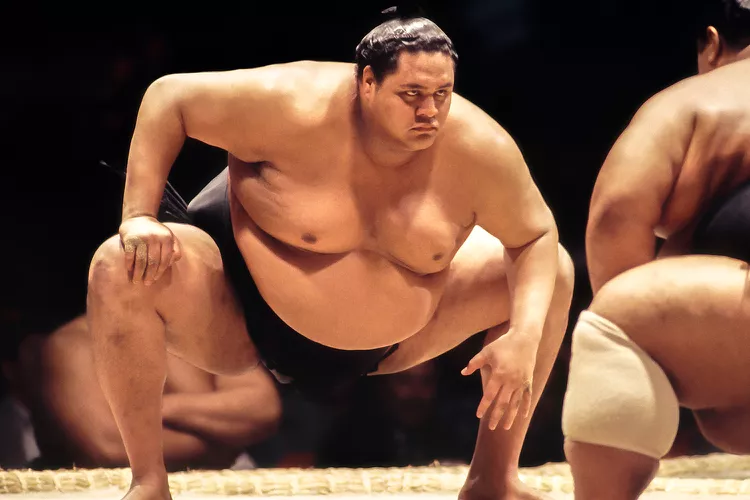Sumo wrestling, a sport steeped in history and tradition, is more than just a competitive endeavor in Japan—it’s a cultural institution. With its origins dating back over 1,500 years, sumo wrestling is not only one of the oldest sports in the world but also a profound ceremonial practice that combines athleticism with Shinto rituals. From the unique lifestyle of the wrestlers to the deep spiritual elements embedded in its practice, sumo is a fascinating subject.
Here are 20 amazing aspects of sumo that showcase why this sport continues to captivate audiences and hold a special place in Japanese culture.
1. Ancient Origins
Sumo’s history dates back to the Yayoi period (300 BCE – 300 CE), making it one of the oldest continuously practiced sports in the world.
2. Shinto Rituals
Every sumo match begins with elaborate Shinto rituals such as salt throwing, which purifies the ring and wards off evil spirits.
3. The Dohyō
The sumo ring, or dohyō, is made of clay and sand and is considered sacred. It is rebuilt for each tournament to ensure purity.
4. Yokozuna Grand Champions
The highest rank in sumo is Yokozuna, a title that is as much about honor and character as it is about skill and record.
5. Weight Matters
Unlike most sports, there are no weight classes in professional sumo. This means a wrestler can face an opponent significantly heavier or lighter.
READ MORE: 25 Amazing Things About the Sumo Legend Akebono
6. Rikishi Lifestyle
Sumo wrestlers, or rikishi, live in communal training stables called heya, where all aspects of their daily lives, from meals to training, are strictly regimented.
7. Chankonabe Diet
Rikishi eat a high-calorie stew called chankonabe to gain weight, which is crucial for success in the ring.
8. Ceremonial Attire
During tournaments, rikishi wear ceremonial aprons called kesho-mawashi, which are elaborately decorated and can be very expensive.
9. Hair is Important
The oicho-mage, a distinctive topknot hairstyle, is worn by wrestlers in the higher divisions during bouts and special occasions.
10. Women and Sumo
Traditionally, women are not allowed to compete in professional sumo or enter the dohyō, although women’s amateur sumo is growing.
READ MORE: 25 Interesting Facts about Pokémon GO
11. Intense Training
Training in sumo is rigorous and often starts before dawn, including a variety of strength-building exercises and practice bouts.
12. Tournaments
There are six major sumo tournaments each year, known as honbasho, which take place over 15 days.
13. Prize Money
Winning rikishi receive envelopes of prize money during the tournament, directly after their matches.
14. Sumo Stables
There are about 40 sumo stables in Japan, each governed by a stable master, a retired wrestler who trains young sumo wrestlers.
15. Sumo Ranking
The sumo ranking system is extremely dynamic, with wrestlers moving up or down in the ranks based on each tournament’s performance.
16. Retirement Ceremony
When a sumo wrestler retires, a special hair-cutting ceremony is held where friends, fans, and other wrestlers cut a piece of the wrestler’s topknot.
17. Global Popularity
While rooted deeply in Japan, sumo has gained international fans, thanks to broadcasts and the success of foreign-born wrestlers.
18. Life After Sumo
Many retired sumo wrestlers stay connected to the sport, becoming coaches, referees, or stable masters.
19. Cultural Impact
Sumo wrestlers often appear in media and are considered embodiments of traditional Japanese virtues and strength.
20. Symbol of Perseverance
Sumo is seen as a test of physical and mental endurance, reflecting the value of perseverance known as nintai in Japanese.
READ MORE: 25 Interesting Facts About One Piece, the Japanese Manga Series
Sumo wrestling is not only a sport but a living tradition that embodies the history, culture, and values of Japan. Its blend of physical prowess, spiritual significance, and community involvement makes it uniquely captivating. As sumo continues to evolve, it remains a powerful symbol of Japan’s cultural heritage, fascinating a global audience with its richness and complexity. Whether you are drawn to its historical aspects, athletic challenges, or ceremonial beauty, sumo wrestling offers a profound glimpse into the heart of Japanese tradition.



